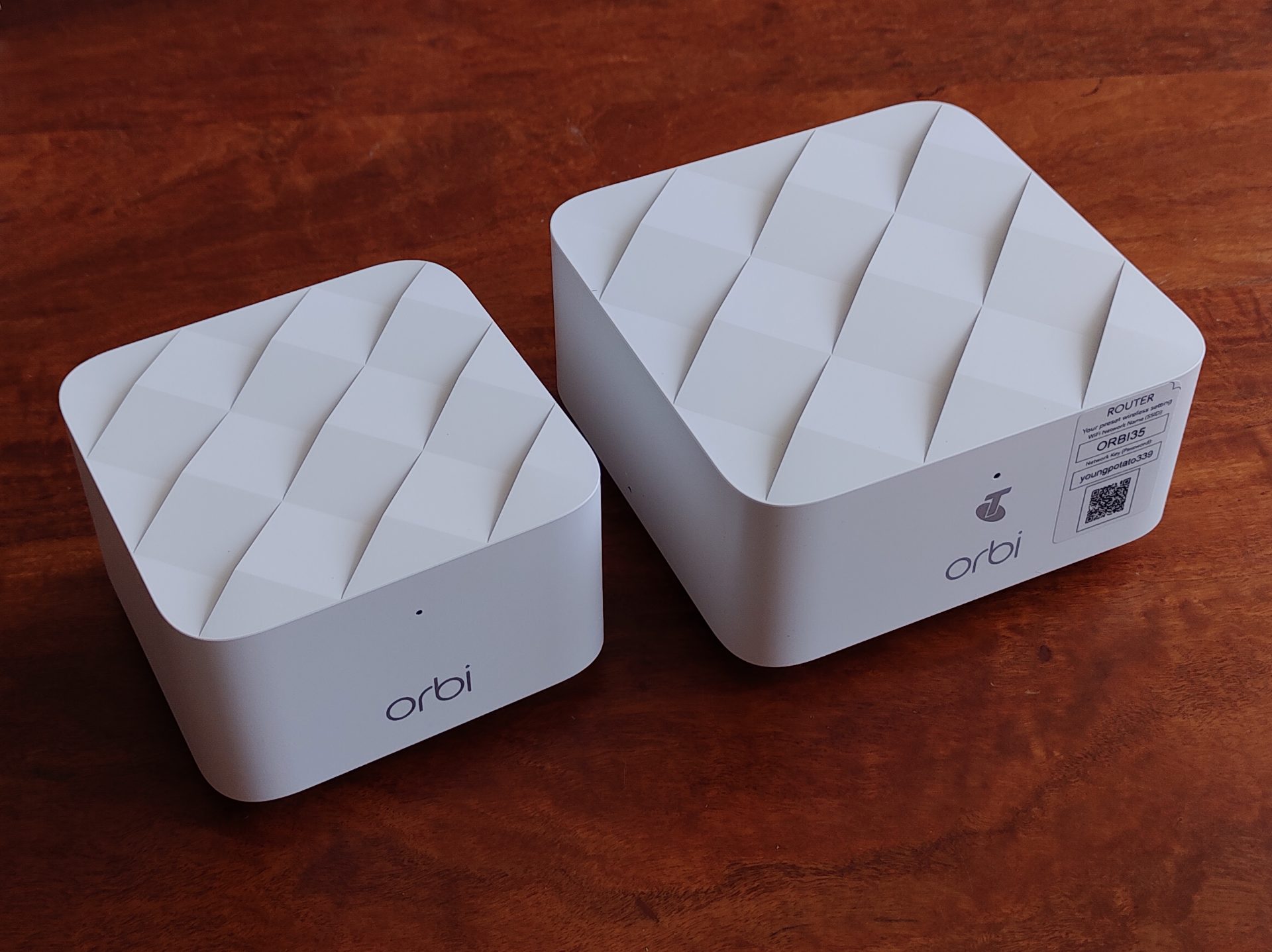Table of Content
This arrangement is a much simpler option than mesh, as you don’t have to worry about building materials like stucco blocking a wireless signal between the router and the access points. Unlike the triband network topology of Netgear's Orbi systems, the Google Nest WiFi mesh system uses a dual-band approach that does without Orbi's dedicated back channel for moving data between the extension and host router. It does have proactive band steering that sends the data to the least congested channel and the preferred extension. The beamforming tunes the transmitted signal to suit the receiver and can connect with up to 100 clients per device; my two-pack has the potential to link 200 devices. We’ve found them all wanting for one reason or another and dismissed them from this guide update.

By looking at the latency of requests made while all six laptops were working simultaneously, we got a good measure of how well the network might function for you during a busy time. The web browsing test is both the most realistic representation of your experience in using your Wi-Fi and the test that almost always fails before any other test does. However, when we tested on a more congested network, the Eero 6+’s latency scores were very close to that of the Eero 6.
If you have a faster internet plan and want additional wired connections…
Netgear’s new, top-of-the-line Orbi mesh kit is available as a three-piece model. It adds 6 GHz bands and Wi-Fi 6E compatibility to a robust and expensive mesh networking system. The RBKE963 tested near the top of our charts, but once you add extra subscriptions like Netgear Armor ($100 per year) and Parental Controls ($70 per year), the RBKE963 is the most expensive networking kit here. And the Orbi has only a one-year warranty and 90 days of free tech support, so you’ll have to pay to extend warranty and tech support coverage (another $120 for two years). This might be fine if you have a sprawling mansion and seek one of the best performing mesh systems, but our upgrade pick and the Eero Pro 6 perform just as well for a lot less cash.
I’ve installed Eero 6 and Eero Pro Wi-Fi 5 systems in relatives’ homes, and they haven’t needed to be reconfigured even after more than a year and a half after installation. I’ve been monitoring them (with permission!) via Eero’s mobile app, and I can restart their Eero networks remotely in case there are issues with their internet connection. Their included Eero Secure trial subscriptions have lapsed , but both Eero networks continue to operate and service these homes with steady Wi-Fi.
Tom's Guide Verdict
And if you have more than 50 devices on your network—increasingly possible when you add smart-home products on top of phones, laptops, and streaming boxes—there’s a higher chance the S4 will be overtaxed. Its price reflects that, so Deco S4 is the choice if you need to serve a few folks in a large home, and if your broadband internet service is 500 megabits or slower. The Trendnet TEW-830MDR2K was one of the least expensive mesh kits in our roundup and also had small unobtrusive nodes.
Gryphon’s routers, like the Guardian and AX, are focused on their parental control aspect, where you can control the sites your children visit, block ads, and schedule their online access. The Gryphon AX mesh network, on the other hand, is robust, and its performance is competitive with our picks. Google’s Nest Wifi Pro is a tri-band Wi-Fi 6E mesh network that’s not compatible with the Wi-Fi 5 Google Nest Wifi and Google Wifi we’ve reviewed below. The Wifi Pro uses the same Google Home app as the previous models, but the new system’s performance was much slower than most of the competitors here. The Nest Wifi Pro had issues with slow overall throughput, 4K streaming, and latency. We'll circle back to this mesh network after it’s been updated, and retest it in our next test cycle.
NETGEAR Orbi RBS50 Satellite Mesh Extender WiFi Tri-band AC3000 ETHERNET USB
The ORbi system uses the larger RJ45 LAN jacks for ISP services and LAN connected devices. NETGEAR Armor shields devices other solutions miss; from phones and laptops to smart TVs and door locks, security cameras, and so much more. This will get you something in a speed class of AC1750 or AC1900 or a little above. Speed class is marketing nonsense, but those numbers indicate you’ll get a two-band, three-stream router, which is a good match for all the gadgets you most likely have. Any higher number and you’re paying for bandwidth you don’t need and your devices can’t use yet.
Joel Santo Domingo is a senior staff writer covering networking and storage at Wirecutter. Previously he tested and reviewed more than a thousand PCs and tech devices for PCMag and other sites over 17 years. Joel became attracted to service journalism after answering many “What’s good? In the previous version of this guide, the Asus ZenWiFi AC was our top pick. However, the CT8 has become more difficult to find, except through third-party sellers that have increased the price hundreds of dollars above that of our upgrade pick, the Asus ZenWiFi AX . Due to these stock and pricing issues, we’ve reconsidered our top pick, as seen above.
How we tested mesh-networking kits
The TP-Link Deco S4 costs half as much as our top pick, and when put to use in our test home of 3,000-plus square feet, it provided steady wireless coverage. We believe it would work well with up to 50 devices, and if you have 500 Mbps internet service or slower. It can be hard to buy a great router without testing them side by side because the connection speed classes stamped on the box don’t actually mean much. These classes come in the form of initially impenetrable alphanumeric jumbles such as “AX6600” or “AC1750.” In this case, “1750” stands for 1.75 gigabits per second.
At any time, you can tap the top of the extension to pause or restart the audio track and run your finger over the extension's top to raise or lower the volume. My favorite is to just say something like "Hey Google, turn it up" or "volume level 4." Using Google's Broadcast function, the extensions can be used as an intercom that can also link with other Google Home gear and Nest Hubs for audio calls. There is a switch on each extension to turn the microphone off and preserve privacy. The Deco X20 was middle of the pack in price and performance, but it failed one of our 4K streams when the network was fully active. Rather than just looking at the mean of all the results during our five-minute test window, we look across the spectrum of results, from good to bad.
Putting devices in the right places is key to any mesh network’s success. You want to place them in the center of your living space away from radio-blocking substances including glass windows, metal appliances, and masonry features like fireplaces, if possible. We started by placing the main router or node in the living room, in the center of our testing space, and connecting it to our cable modem via Ethernet. In addition to giving a Wi-Fi signal greater range, mesh kits tend to be more visually appealing than standard routers. The Asus XD4 is a stripped-down dual-band Wi-Fi 6 iteration of the ZenWiFi mesh network, built into a three-piece kit. In addition to its lower price, its nodes are physically compact compared with our upgrade pick.
In a previous version of this guide, we praised the Wi-Fi 5 Eero Pro + 2 Eero Beacons kit’s ease of setup and its performance on our latency tests. However, the competition has surpassed it in price and performance in our tests. We wanted to make it difficult for the mesh-router kits but not impossible, so we surveyed and dismissed other spots in the home during our initial setup. We verified that the core features of a mesh network were enabled, namely using a single network name to allow roaming for both 2.4 GHz and 5 GHz channels.
The Velop MX10 performed okay but not well enough to justify its high price (it’s about $100 more than the Asus XT8, our upgrade pick). The Netgear Nighthawk MK83 is a good plan B if the Asus ZenWiFi AX is out of stock, or if it is $50 to $100 more expensive than the MK83. The Nighthawk is well suited to a 3,000-square-foot or larger home with gigabit internet service, topping our throughput test and finishing near the top on our latency tests. However, all the added fees and paid subscriptions listed below diminished the MK83’s overall rating. Testing mesh kits this way—with a mix of easy and difficult spots to reach—ensures that we find the ones that work best throughout your house, rather than just looking good in the easy spots. Testing mesh kits this way—in the most difficult spots to reach, in a space with a mix of building materials—ensures that we find the ones that work best throughout your house, rather than just looking good in the easy spots.
Please note that Wi-Fi 7 is still in the early pre-certification stages and is not a must have right now. A great mesh router should provide many years of reliable service, and buying one with more recent technology can future-proof it for longer. The Asus ZenWiFi AX has compatibility for the Wi-Fi 6 standard, along with extra WPA3 network security. Wi-Fi 6 mesh routers have only been widely available since spring of 2020 and are generally more expensive than Wi-Fi 5 mesh kits. The Eero 6 is simpler to set up than some of the other mesh systems presented here, and it should be a natural fit for folks who want to minimize their time fiddling with router settings.
Budget mesh Wi-Fi pick: TP-Link Deco S4
Each node had screw mounting holes molded into their bases, which is a nice touch. However, the Trendnet’s admin interface was unpolished, and it placed dead last on our latency tests. TP-Link announced they will have Wi-Fi 7 routers and mesh systems in early 2023, including the Deco BE95, BE75, and BE65. All three use the 6 GHz radio frequency highlighted above, and are backward compatible with Wi-Fi 5, 6, and 6E. At the start, we anticipate that Wi-Fi 7 will improve communication between the mesh network’s router and extenders. Like with Wi-Fi 6E, you’ll have to wait for Wi-Fi 7-compatible laptops and phones to be released before you can fully utilize Wi-Fi 7 and harness its improvements.

The router lacks a USB connector or a power switch, while the extensions do without any wired connection, so they can't be used as cabled access points the way Netgear Orbi hardware can. Each Nest WiFi device has four internal antennas that work with the electronics to create a self-healing 802.11ac network. While the router's 5GHz transmissions uses a 4x4 setup, its 2.4GHz band uses a 2x2 design, creating a maximum throughput of 2,200 Mbps. The Arris Surfboard Max AX6600 is a two-piece Wi-Fi 6 mesh kit with a price competitive with our top pick, but its performance was on the low end of the pack, it lacks WPA3 security, and its user interface is very basic.

No comments:
Post a Comment